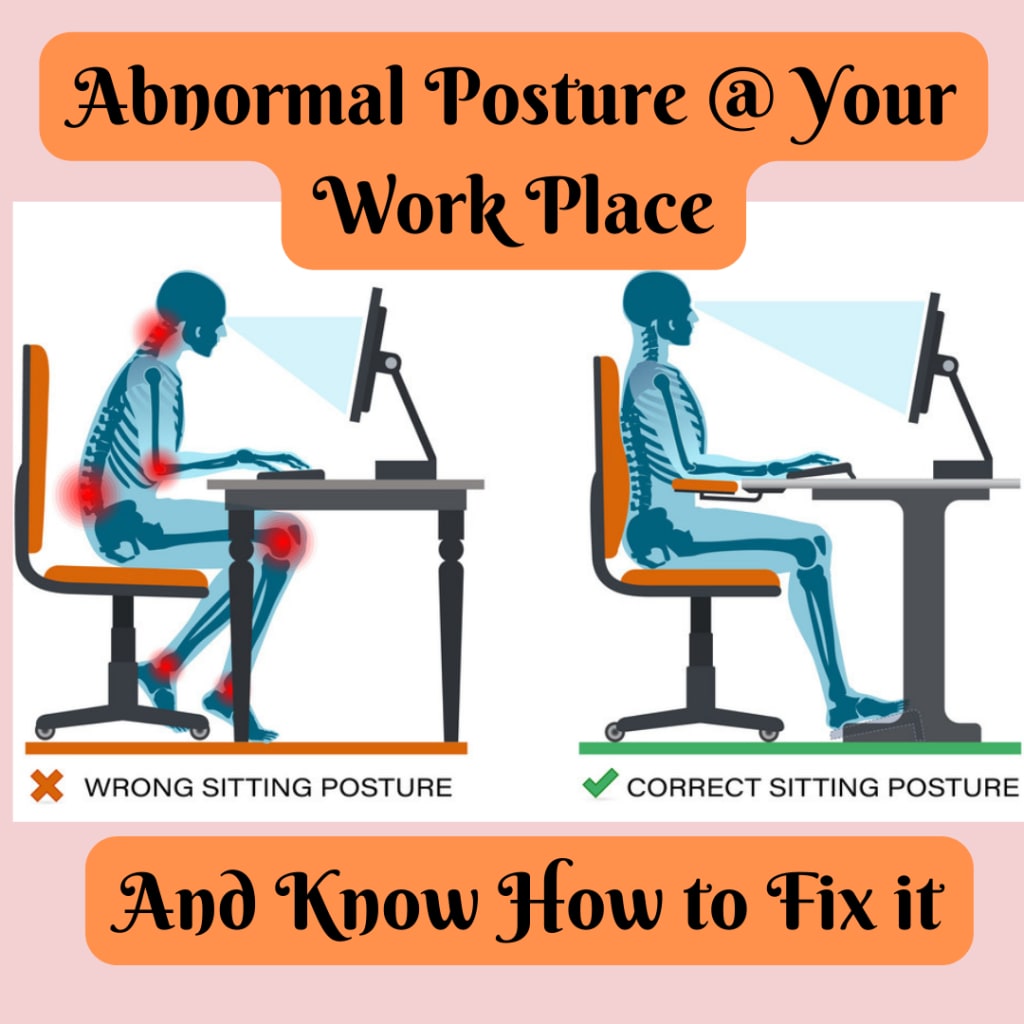Hazards of Abnormal Posture in Young Software Professionals
Sitting in front of a computer for prolonged periods of time can lead to poor posture, which can cause a variety of health problems for software professionals.

Sitting in front of a computer for prolonged periods of time can lead to poor posture, which can cause a variety of health problems for software professionals. Here are some hazards of abnormal posture in young software professionals and how they can be addressed:
Neck and Shoulder Pain: Poor posture can cause neck and shoulder pain due to the muscles being strained from holding the head forward for long periods of time. This can lead to tension headaches and reduced productivity. To prevent this, it is important to maintain proper posture by sitting up straight, keeping the shoulders relaxed and avoiding tilting the head forward.
Back Pain: Sitting in a hunched position for long periods of time can lead to back pain, especially in the lower back. This is because poor posture can put pressure on the spine and cause the muscles in the back to become strained. To prevent this, it is important to use a supportive chair and take frequent breaks to stretch and walk around.
Carpal Tunnel Syndrome: Poor posture can also contribute to carpal tunnel syndrome, a condition where the median nerve in the wrist is compressed, leading to numbness, tingling and pain in the hand and wrist. To prevent this, it is important to maintain proper wrist alignment and use ergonomic keyboards and mice that are designed to reduce strain on the wrists.
Abnormal posture can have several hazardous effects on young software professionals, including:
Musculoskeletal disorders: Prolonged sitting in an abnormal posture can lead to a number of musculoskeletal disorders, such as back pain, neck pain, shoulder pain, and carpal tunnel syndrome.
For example, if a software professional spends long hours sitting in a chair that does not provide proper lumbar support, they may experience lower back pain due to the strain on their lower back muscles. Similarly, if they spend long hours typing on a keyboard with their wrists bent upwards, they may develop carpal tunnel syndrome, a condition where the median nerve that runs through the wrist becomes compressed, causing pain and numbness in the hand.
Reduced flexibility: Abnormal posture can lead to stiffness in the joints, reducing flexibility and range of motion.
For example, if a software professional spends long hours sitting in a chair with their shoulders slouched forward, they may develop tightness in their chest muscles, making it difficult for them to lift their arms above their head. This can also increase the risk of injury during physical activities, such as lifting weights or playing sports.
Eye strain: When a person is in an abnormal posture, their screen positioning may be incorrect, causing eye strain and dryness.
For example, if a software professional spends long hours staring at a computer screen that is positioned too high or too low, they may experience eye strain, blurred vision, and headaches. This can also lead to dryness of the eyes, causing discomfort and further exacerbating the problem.
Reduced productivity: When workers experience pain or discomfort, they may become distracted and less productive.
For example, if a software professional spends long hours sitting in a chair with poor posture and experiences neck and shoulder pain, they may become distracted by the pain, reducing their ability to focus
Conclusion
In conclusion, young software professionals who spend long hours working in an abnormal posture are at risk of developing several hazardous conditions, including musculoskeletal disorders, reduced flexibility, eye strain, reduced productivity, and psychological stress. These hazards can have a significant impact on their health, quality of life, and work performance. To prevent these hazards, it is essential for young software professionals to take regular breaks, maintain good posture, perform stretching and strengthening exercises, and use ergonomic equipment and proper workstation setup. By taking these steps, they can avoid the hazards of abnormal posture and promote their overall health and well-being.
About the Creator
Dr.D.Clement
Dr.Clement is an Sr.Physiotherapist,graduated from DR.M.G.R MEDICAL UNIVERSITY in 2008 and obtained Masters in physiotherapy (ortho) in 2011 from VEL’S UNIVERSITY.He owned his private practice in Siloam Pain & Stroke Rehab Clinic,Chennai.
Enjoyed the story? Support the Creator.
Subscribe for free to receive all their stories in your feed. You could also pledge your support or give them a one-off tip, letting them know you appreciate their work.





Comments
There are no comments for this story
Be the first to respond and start the conversation.